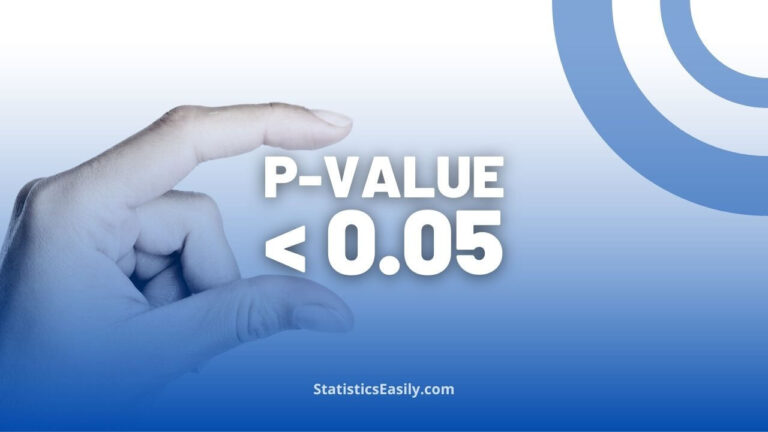Understanding the Assumptions for Chi-Square Test of Independence
In this article, you will learn about the complexities of the Chi-Square Test of Independence, its key assumptions, and practical applications in data analysis.
What Are the Assumptions for Chi-Square Test?
Summarizing, the Chi-Square Test makes several key assumptions, such as the data should be obtained from a random sample and be categorical in nature, with levels or categories that are mutually exclusive. Each subject in the study contributes to only one cell in the analysis, and the groups being studied must be independent. Additionally, the expected frequency in each contingency table cell should be at least five in 80% of the cells — no cell should have an expected count of less than one.
Highlights
- The Chi-Square Test of Independence determines significant associations between 2 categorical variables.
- The test assumes data is obtained from a random sample.
- Variables categories should be mutually exclusive, and each subject should fit into one category.
- The expected frequency in each cell should be five or more in at least 80% of the cells.
- The Chi-Square Test does not indicate the strength or direction of the relationship.
Ad Title
Ad description. Lorem ipsum dolor sit amet, consectetur adipiscing elit.
Introduction to Chi-Square Test of Independence
Statistical analysis is fundamental to data interpretation across many fields, from business to healthcare to social sciences. One of the essential tools in this domain is the Chi-Square Test of Independence, a non-parametric statistical test employed to determine if there is a significant association between two categorical variables.
The Chi-Square Test of Independence is based on the principle of comparison. It compares the observed frequencies (what you have observed in your sample) with the expected frequencies (what you would expect in your sample if the null hypothesis is true). The null hypothesis, in this context, states no association between the two variables — they are independent.
We use a contingency table to execute the test where each cell represents a different possible outcome. For instance, if we are looking at the relationship between “gender” and “preferred type of music,” each cell in the table would represent a different combination (male who prefers rock, female who prefers classical, etc.). We then calculate the expected frequencies based on the total counts and compare them with the observed frequencies.
The Chi-Square statistic indicates the divergence between the observed and expected frequencies. A large Chi-Square value signifies a substantial difference, leading us to reject the null hypothesis, implying a significant association between the variables.
It is essential to note that the Chi-Square Test of Independence does not tell us anything about the relationship’s strength or direction, only that a relationship exists. Further analysis would be required to probe the nature of this relationship.
The Key Assumptions for Chi Square Test of Independence
Meeting a set of assumptions is crucial to apply the Chi-Square Test of Independence accurately. Understanding these assumptions is critical for the correct interpretation of the test results.
Random Selection: This is a key assumption for parametric and non-parametric tests, including the Chi-Square Test of Independence. The data should be obtained through random selection to ensure the sample is representative of the population. Multiple replication studies are recommended to validate the results when random sampling cannot be achieved. It’s also important to note that the lack of random selection doesn’t necessarily invalidate the test; it just means the conclusions drawn may not be generalizable to the broader population.
Frequency Data: The data in the cells should be frequencies or counts of cases. The data’s percentage or other transformations are unsuitable for the Chi-Square Test of Independence.
Mutually Exclusive Categories: The levels or categories of the variables should be mutually exclusive. This means that each subject fits into one and only one level of each variable.
Single Data Contribution: Each subject may contribute data to one and only one cell in the Chi-Square test. The Chi-Square test cannot be used if the comparisons involve the same subjects over time, for example, at Time 1, Time 2, and Time 3.
Independence of Study Groups: The study groups must be independent. This means that if the groups are related or if the data consists of paired samples (for instance, a parent paired with their child), a different statistical test must be used.
Categorical Variables: There should be two variables, and both should be measured as categories, typically at the nominal level. However, ordinal, interval or ratio data collapsed into ordinal categories can also be used.
Cell Expected Frequency: The expected frequency in each cell should be 5 or + in at least 80% of the cells — no cell should have less than one expected count. This assumption helps specify the required sample size for a given number of cells in the Chi-Square test.
Additionally, it’s worth noting that the chi-square test of independence is non-parametric and does not assume a specific distribution for the population (like normality), differentiating it from many other statistical tests.
Ad Title
Ad description. Lorem ipsum dolor sit amet, consectetur adipiscing elit.
A Real-World Example
Consider a marketing team at a software company that wants to know if there is a relationship between the type of advertising medium (online, print, television) and their software purchase. They collect data from a sample of customers, noting the advertising medium each customer was exposed to and whether they purchased the software.
The variables here are “advertising medium” and “purchase of software,” both categorical. The marketing team can use the Chi-Square Test of Independence to understand if these variables are related.
They would first construct a contingency table with the observed frequencies, then calculate the expected frequencies assuming no relationship between the variables. The Chi-Square statistic is then computed, comparing the observed and expected frequencies.
Suppose the calculated Chi-Square statistic exceeds the critical Chi-Square value (found in a Chi-Square distribution table). In that case, they will reject the null hypothesis, concluding that there is a significant relationship between the advertising medium and the purchase of their software. Conversely, if the calculated value is less than the critical value, they would fail to reject the null hypothesis, suggesting no significant relationship.
This example illustrates the practical application of the Chi-Square Test of Independence in real-world scenarios, helping teams make informed decisions based on statistical evidence.
Limitations of the Chi-Square Test of Independence
Nature of Data: The Chi-Square Test of Independence can only be used for categorical or nominal data. It is only suitable for continuous data if it’s been adequately categorized. Improper categorization can lead to loss of information and potential bias.
No Direction or Strength of Association: The Chi-Square Test of Independence determines whether an association exists between two variables, but it doesn’t provide information about the strength or direction of this association. Appropriate effect sizes measures, such as Cramer’s V or Phi, can be employed to quantify the strength of association in a Chi-Square Test.
Dependence on Sample Size: The accuracy of the Chi-Square Test improves with larger sample sizes. While there’s no strict minimum, small samples can lead to problems with the chi-square approximation. Also, low expected frequencies in the cells of the contingency table (less than 5) can make the test less reliable.
Independence of Observations: The test assumes that the observations are independent, meaning that the outcome of one observation doesn’t affect another. This assumption can be violated in studies where the same subjects are measured over time or in specific experimental designs.
Sensitivity to Sparse Data: The Chi-Square Test can give misleading results if some cells in the contingency table have very low frequencies or are empty (a condition called “sparse data”). In such cases, exact methods or Fisher’s exact test might be preferred.
Does Not Handle Missing Data Well: The Chi-Square Test is not robust against missing data. If the data set has missing values, they must be appropriately handled (e.g., through imputation methods) before applying the test.
| Key Element | Description |
|---|---|
| Test Definition | The Chi-Square Test of Independence is a non-parametric statistical test used to determine if there is a significant association between 2 categorical variables. |
| Test Purpose | To check for a significant difference between categorical data’s observed and expected frequencies. |
| Null Hypothesis | There is no association between the two variables. |
| Assumptions | Random selection, frequency data, mutually exclusive categories, single data contribution, independence of study groups, categorical variables, and cell expected frequency. |
| Limitations | Can only be used for categorical data, does not provide strength or direction of the association, accuracy improves with larger sample sizes, assumes observations are independent, sensitive to sparse data, and does not handle missing data well. |
| Alternatives When Limitations Exist | Fisher’s exact test for sparse data and effect size measures (e.g., Cramer’s V or Phi) to quantify the strength of association. |
Ad Title
Ad description. Lorem ipsum dolor sit amet, consectetur adipiscing elit.
Conclusion
By adhering to these assumptions, we can ensure that the Chi-Square Test of Independence is used correctly and that its results are statistically valid. Unfortunately, misunderstanding or violating these assumptions can lead to inaccurate conclusions.
Recommended Articles
Are you prepared to explore further into statistics and data analysis? Check out our other informative articles on related topics in our blog. Expand your knowledge and sharpen your skills by exploring valuable insights and expert tips. Click here to start your learning journey now!
- How to Report Chi-Square Test Results in APA Style: A Step-By-Step Guide
- What is the Difference Between the T-Test vs. Chi-Square Test?
- Mastering the Chi-Square Test: A Comprehensive Guide
- The Chi-square test of independence
- Assumptions for Chi-Square Test (Story)
- Chi-Square Calculator: Enhance Your Data Analysis Skills
Frequently Asked Questions (FAQs)
It’s a non-parametric statistical test used to determine if there’s a significant association between two categorical variables.
Assumptions include a random selection of data, categorical data, mutually exclusive categories, single data contribution, independence of study groups, and specific cell expected frequency.
No, it only determines if an association exists. However, measures such as Cramer’s V or Phi can be used to quantify the strength.
While there’s no strict minimum, larger sample sizes improve accuracy. Therefore, the expected frequency in each cell should be 5 or + in at least 80% of the cells.
Only if the continuous data has been adequately categorized. Improper categorization can lead to loss of information and potential bias.
It’s not robust against missing data. Missing values must be appropriately handled (e.g., through imputation methods) before applying the test.
Violating or misunderstanding these assumptions can lead to inaccurate conclusions.
No, the test assumes that the study groups are independent. Therefore, a different statistical test must be used for paired samples.
The H0 (null hypothesis) states that there is no association between the two variables — they are independent.
It’s calculated by comparing the observed and expected frequencies in a contingency table. The null hypothesis (H0) is rejected if the calculated statistic exceeds the critical value.








